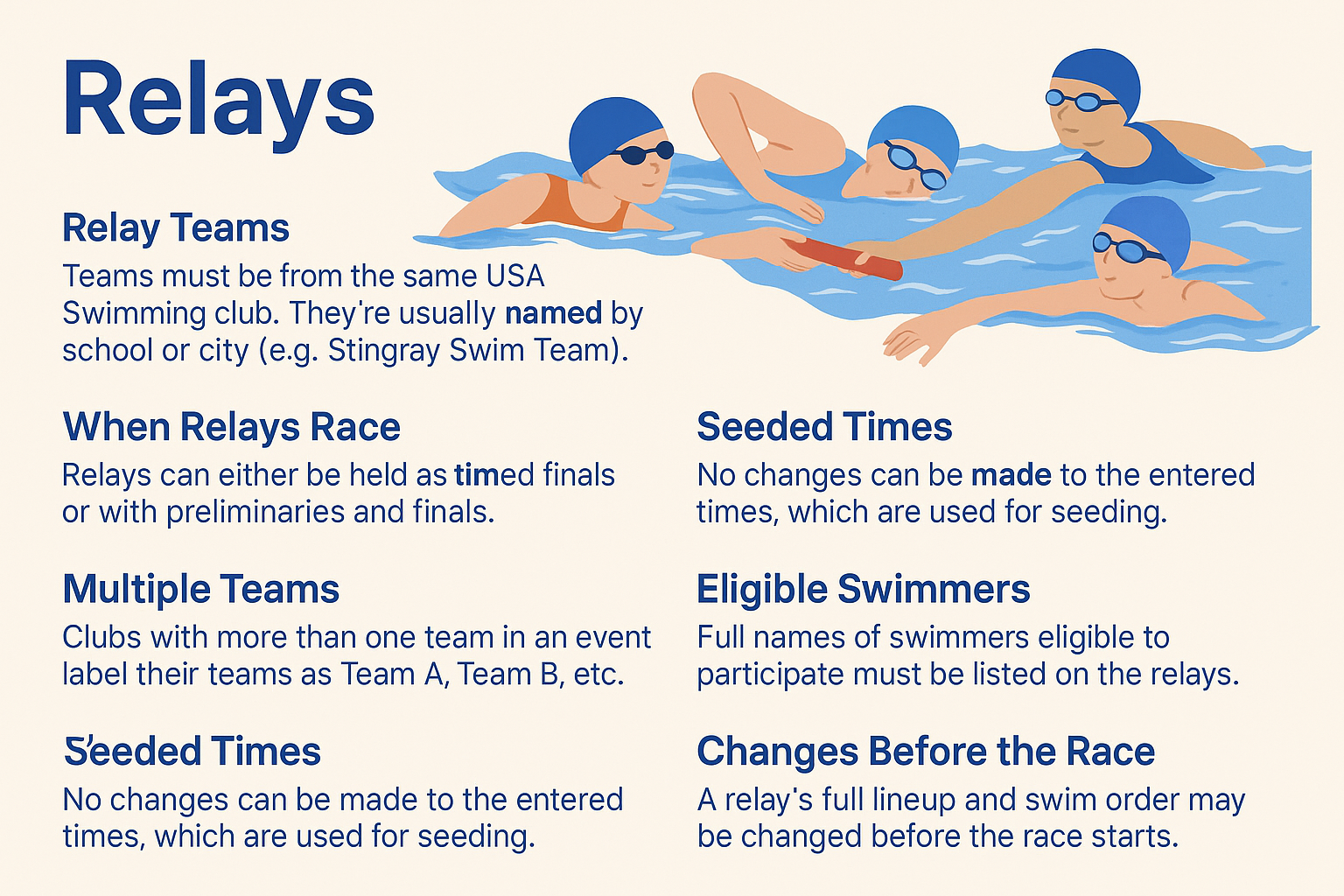-
Starting in the 2025–26 school year, major changes are coming to college swimming due to the House v. NCAA settlement. According to NCSA, these changes affect scholarships, roster sizes, and even athlete pay — but what does it all actually mean?
Let’s break it down clearly for swimmers and families new to the process.
🔹 What Changed for NCAA Swimming?
✅ 1. Scholarship Cap Removed
- Before: NCAA capped men’s swimming scholarships at 9.9 (equivalency).
- Now: That cap is gone — schools can give aid to as many swimmers as they want, up to the new 30-athlete roster limit.
💡 But: Just because they can give more aid doesn’t mean they will. Schools must fund that money themselves.
✅ 2. Roster Limits Introduced
- NCAA D1 men’s and women’s swimming teams will now be limited to 30 rostered athletes.
- Previously, teams could carry 35–45 swimmers. Now, walk-on opportunities may shrink.
✅ 3. Schools Can Pay Athletes (New $20.5M Pool)
- Starting July 1, 2025, schools can choose to share up to $20.5 million per year with all their student-athletes.
- This is separate from scholarships.
- Distribution is not required to be equal and will likely favor high-revenue sports (football, basketball).
- Swimming may receive a small share or none at all.
⚠️ What Didn’t Change
💰 No New Money From the NCAA
- The NCAA isn’t giving schools extra money to fund these changes.
- If a school doesn’t increase its swim budget, the amount of financial aid available will stay the same, even with more flexibility.
🏛 Ivy League Policy Remains the Same
- Ivy League schools still do not offer athletic scholarships (including for swimming).
- They continue to provide need-based financial aid only.
🧮 Real Example (Clarified)
Let’s say a school’s swim team has a $400,000 scholarship budget.
- Under old rules: Coach could divide that across ~20 swimmers within the 9.9 cap.
- Under new rules: Coach can still spend only $400k, but now across up to 30 athletes.
❗ That money is not split equally.
Some swimmers may get full scholarships, others partial, and some none at all.
🏁 Who Actually Benefits?
Situation Result School increases swim budget ✅ More swimmers can receive meaningful aid School keeps same budget ⚠️ More competition for the same dollars School cuts walk-on slots ❌ Fewer athletes total, less access
🎯 What Swimmers & Families Should Do
✔️ Ask Coaches Directly:
- “How many scholarships are actually funded at your program?”
- “Do you expect to increase funding under the new rules?”
- “What happens to walk-ons now that roster sizes are capped?”
✔️ Understand the Rules vs. Reality:
- New rules give permission, not guarantees.
- Each school decides how much they actually fund.
✔️ Focus on Academics + Performance:
- Combine strong grades with fast swimming to stand out.
- Keep options open across divisions and conferences.
📌 Final Takeaway
The new NCAA rules allow schools to give more —
But unless your school chooses to invest in swimming, you might see no difference at all.This change opens the door, but it’s still up to schools and coaches to decide who walks through it.
-
A adam moved this topic from General Discussion on
Copyright © 2025 Swim Standards
As an Amazon Associate, Swim Standards earns from qualifying purchases.

